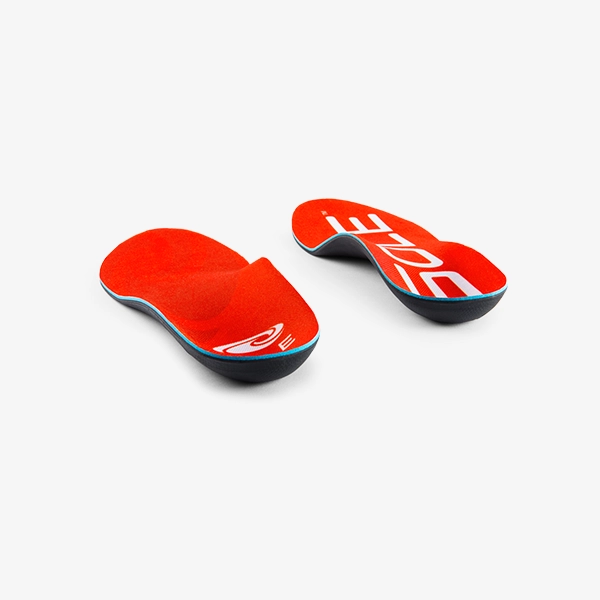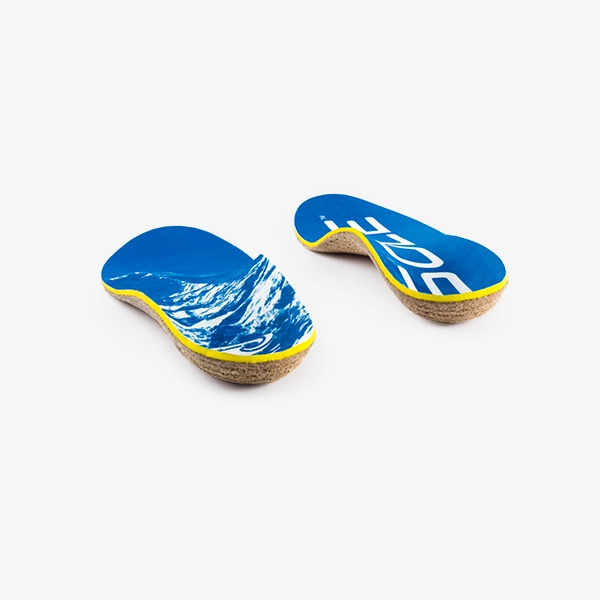Neuropathies are very common within the cancer population. They can be a result of radiation, surgery, or chemotherapy. Most commonly, they are caused by chemotherapy induced damage to sensory nerves. They're experienced as tingling or pain in the hands and feet; known as chemotherapy induced peripheral neuropathies (CIPN).
As this blog is in partnership with SOLE, we will explain CIPN in general but focus primarily on the occurrence within the feet. We will explore how chemotherapy induced peripheral neuropathies (CIPN) occur, how to diagnose them and better yet tools to manage them!
Akin to my previous blog on managing hormone therapy within breast cancer, I will focus on science backed tools that are low risk such as managing foot health and using cold exposure.

The Cancer Physio helps a patient

The Cancer Physio helps a patient
Chemotherapy Induced Peripheral Neuropathies Explained
Our central nervous system includes our brain and spinal cord. The central system is less exposed to toxins as compared to the peripheral system. All of the components outside the brain and spinal cord are termed ‘peripheral’ and are more vulnerable to the effects of chemotherapy.
The peripheral system includes your autonomic nervous system, working in the background with little conscious thought. Peripheral nerves can get jangly, impacting gaze, bowel health, or sensation. Most commonly however, patients experience the symptom of tingling or pain in the hands and/or feet.
If you are concerned about your nerve symptoms, a neuropathy assessment offered here at the cancer physio may provide some answers.
Main Symptoms of Chemotherapy Induced Peripheral Neuropathies:
Bilateral altered sensations of pain (numbness or hypersensitivity)
Bilateral altered perceptions of temperature, vibration, or touch
Bilateral electrical, burning or shooting sensations
Bilateral numbness, tingling, or itchiness

The Cancer Physio does an assessment for Peripheral Neuropathy in the feet

The Cancer Physio does an assessment for Peripheral Neuropathy in the feet
Why do Chemotherapy Induced Peripheral Neuropathies occur?
While chemotherapy has saved many lives, it is classified as cytotoxic and at times cardio-toxic. Chemotherapy can cause injury to the peripheral nerves due to a change in intracellular transport in those nerves. In these instances, the transportation of information down the nerve’s core is disrupted, leading to alterations at the very end.
Imagine a tree with healthy roots but with yellowing leaves. The leaves are the last part of the branching system where leftover nutrients finally get to. When it comes to neuropathies of the feet, you can think of your feet in the same way as those leaves: the furthest point that disrupted nerves must send and receive information, and thus the most likely to be disrupted.
So how can we prevent and manage CIPN in the feet?
How to prevent and manage chemotherapy induced peripheral neuropathies in the feet.
#1) SPEAK UP.
Patients who have had other neuropathies prior to their diagnosis or have a family history of neuropathies may be at increased risk. Additional risk factors are age, obesity, diabetes, and previous lymph node removal. Discuss your health history with your oncologist to understand your risk level for CIPN.
If you have pre-existing neuropathies consider a neuropathy assessment to track any concerns moving forward with treatment.
Those with cancer are often in survival mode; pushing symptoms to the wayside to prioritize treatment. In the case of neuropathies, the changes can be permanent, impacting your long term quality of life.
If nerve symptoms are occurring, speak to your oncologist right away. There are options. You can discuss medications that are less known to cause CIPN or your oncologist may consider a chemotherapy dose delay.
#2) FOOT HEALTH.
Maintaining blood flow and general foot health reduces the risk of CIPN. Managing the load placed on the plantar fascia, pressure on nail beds and general circulation to the feet is vital in maintaining tissue health. Exercise, in addition to supportive footwear can help maintain circulation to the feet.
I have mentioned the benefits of exercise in cancer in previous blogs. Following the SAFE exercise guidelines can allow you to exercise confidently in any stage of treatment, especially when undergoing chemotherapy.

SOLE footbeds offer support for chemotherapy patients

SOLE footbeds offer support for chemotherapy patients
Good footwear should include an orthopedic insole. SOLE’s insole design prioritizes plantar fascia support through arch support, optimal joint loading through metatarsal padding and foot stability through a deep heel cup. SOLE footbeds can easily be moved from shoe to shoe. Their Thick options offer thick cushioning as well as essential structural support. Their Thin options are extremely versatile in that they fit into any shoe. SOLE Medium footbeds options offer the best of both worlds: a medium layer of cushioning that still fits most regular-fitting footwear like running shoes.
Reliable footbeds to help manage CIPN
#3) SAFETY
To safely manage CIPN in the feet, here are tips:
Keep the hot water tank at home less than 40 degrees Celsius to avoid burns.
If you feel unsteady or in danger of tripping on your feet, consider SOLE insoles to promote stability and add confidence on your feet.
Consider handrails on the stairs, grab bars in the shower and mats in the tub
Keep your house well-lit inside and out.
#4) COLD EXPOSURE
Research has shown that cold exposure can lead to a reduction in neuropathies by as much as 50%(Eckhoff L et al. 2013).
Cold exposure can include a cold bath, cold shower, cold body of water or the use of cryotherapy equipment. I have highlighted our cold exposure protocol in previous blogs for those who want to learn more and get started safely. Our cold exposure protocol may help to prevent and manage chemotherapy induced peripheral neuropathies of the feet for those undergoing chemotherapy.
By adhering to the tools above, and having a personalized rehab plan, we hope that CIPN prevention can be supported and we can improve the quality of life for those who are currently suffering.
Once again I hope this leaves you with tools and curiosity. With curiosity comes openness; and with openness comes possibility.
As always, thank you for your interest in science and rehab.
Kindly, The Cancer Physio
A Note from The Cancer Physio:
Thank you for reading this blog today, I aim to provide personalized cancer rehab driven by care for people and science. I work both in the clinic and through tele-health across Canada offering physiotherapy services. I support all cancers through all 5 phases. From treatment through to returning to work, personalized support awaits. Start cancer physio today!
I completed my masters at UBC in 2016 in physical therapy and I have advanced training in breast cancer rehabilitation, and head and neck cancers, amongst many other advanced level certifications.
With an aims to curate the latest science, and provide evidence rich tools, I think it is important to understand that not all questions can be answered and good science seeks to provide more questioning over time.



